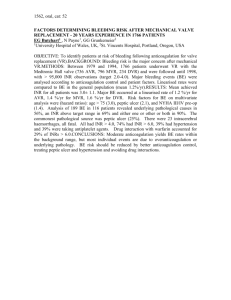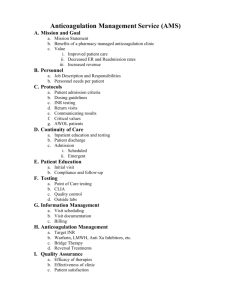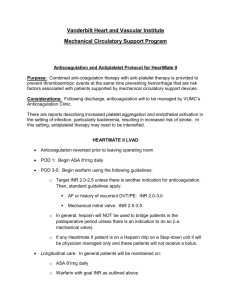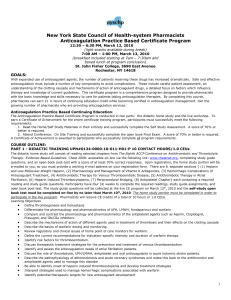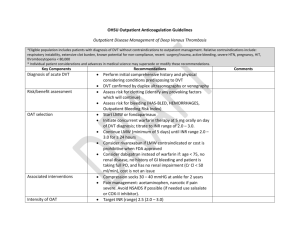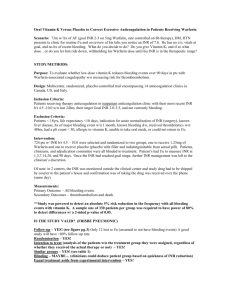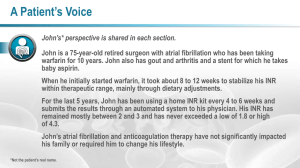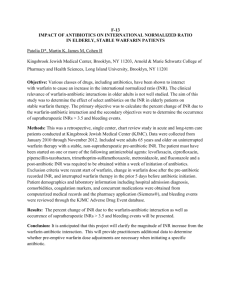Guideline for Managing and Triage of Anticoagulation Therapy
advertisement
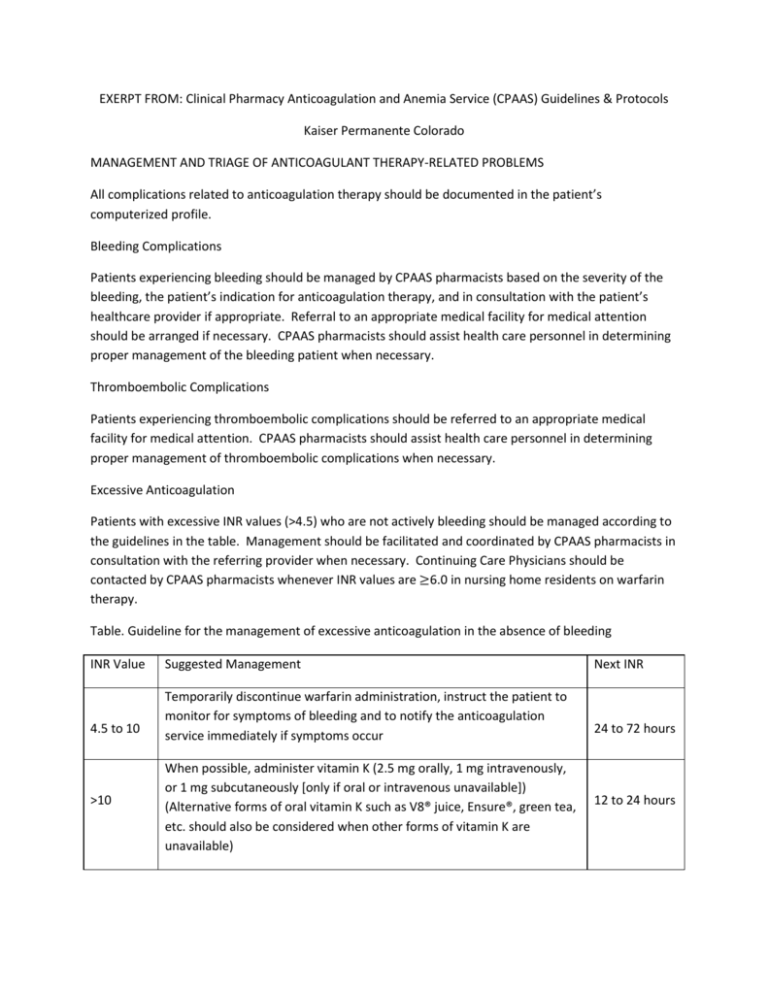
EXERPT FROM: Clinical Pharmacy Anticoagulation and Anemia Service (CPAAS) Guidelines & Protocols Kaiser Permanente Colorado MANAGEMENT AND TRIAGE OF ANTICOAGULANT THERAPY-RELATED PROBLEMS All complications related to anticoagulation therapy should be documented in the patient’s computerized profile. Bleeding Complications Patients experiencing bleeding should be managed by CPAAS pharmacists based on the severity of the bleeding, the patient’s indication for anticoagulation therapy, and in consultation with the patient’s healthcare provider if appropriate. Referral to an appropriate medical facility for medical attention should be arranged if necessary. CPAAS pharmacists should assist health care personnel in determining proper management of the bleeding patient when necessary. Thromboembolic Complications Patients experiencing thromboembolic complications should be referred to an appropriate medical facility for medical attention. CPAAS pharmacists should assist health care personnel in determining proper management of thromboembolic complications when necessary. Excessive Anticoagulation Patients with excessive INR values (>4.5) who are not actively bleeding should be managed according to the guidelines in the table. Management should be facilitated and coordinated by CPAAS pharmacists in consultation with the referring provider when necessary. Continuing Care Physicians should be contacted by CPAAS pharmacists whenever INR values are ≥6.0 in nursing home residents on warfarin therapy. Table. Guideline for the management of excessive anticoagulation in the absence of bleeding INR Value 4.5 to 10 >10 Suggested Management Temporarily discontinue warfarin administration, instruct the patient to monitor for symptoms of bleeding and to notify the anticoagulation service immediately if symptoms occur When possible, administer vitamin K (2.5 mg orally, 1 mg intravenously, or 1 mg subcutaneously [only if oral or intravenous unavailable]) (Alternative forms of oral vitamin K such as V8® juice, Ensure®, green tea, etc. should also be considered when other forms of vitamin K are unavailable) Next INR 24 to 72 hours 12 to 24 hours Subtherapeutic Anticoagulation The following factors should be taken into consideration when determining the therapeutic plan for patients with subtherapeutic anticoagulation: 1. The degree to which the INR is subtherapeutic 2. The estimated time that the INR may have been subtherapeutic 3. The individual’s risk of thromboembolism 4. The estimated time required to reestablish therapeutic anticoagulation. Based on the above factors, CPAAS pharmacists should identify and remedy the cause of the low INR if possible, promptly reestablish therapeutic anticoagulation, and determine whether cross-coverage with injectable anticoagulants is warranted. When appropriate, CPAAS pharmacists should also consult with the referring provider.
